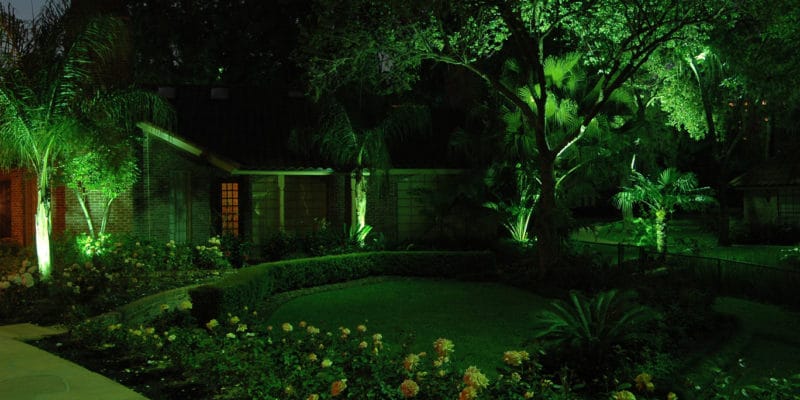An Easy 5-Step System For Houston Landscape Lighting Part II
Step 4: Spacing Outdoor Fixtures
How far apart landscape lights should be set is a subjective, situational decision. Most lights come with six feet of lead wire, but lights can be spaced closer or further apart as necessary.
Here are some basic spacing suggestions for different landscape lighting situations:
- Path & Area Lights: Path and area lights can be set 10 feet apart. Remember, the goal here is to guide people down a path, not illuminate it completely.
- Accent & In-Ground Lights: Small objects can be lit with one or two fixtures. Larger objects, like large-canopy trees, may need three or four. As a rule of thumb, use more lights when you anticipate multiple viewing angles. Most in-ground light fixtures allow you to adjust their angle and overall light output. Order a few extra and make adjustments based on the way the lights actually work on your property.
- Wall Washers: You can get even illumination on walls by placing your lights one to two feet away from the base of the wall. Space the fixtures out with six to eight feet in between them.
- Hardscape Fixtures: Use three-inch light strips in tight spaces. Six-inch strips are standard for illuminating deck handrails, steps, and retaining walls. Order larger sizes if you have need of more illumination.
- Tape Lights: Tape lights have certain built-in maximums. Runs can be no longer than 40 feet, and each run can carry no more than five amps. Tape lighting is typically sold in one, five, and 10-foot lengths.
- Step Indicators: Light outdoor entertainment areas (e.g. patios and decks) wherever you expect foot traffic.
- General Indicators: Marky out the edges of spaces you want to define with lights spaced at least two feet apart.
Step 5: Running Wires, Powering Lights, Final Adjustments
Your last step is to move from your layout sketches to real life. If you’re building a 12V system, you’re probably running all of your fixtures off one transformer. This is feasible even if your setup includes both dry and wet (i.e. underwater) fixtures. Most 12V transformers can be plugged directly into a standard power outlet. These transformers are available in different wattage capacities; you can cover anything from 75 to 600 watts with a standard transformer. Size your transformer according to the number of fixtures and runs in your layout.
It’s a good idea to leave a little additional capacity in your system. This allows you to add on new fixtures later, if, for instance, you install a new feature you want to light. A little foresight can save you the expense of revising your entire setup.
Don’t forget to add a timer or a photocell to switch your lights on and off automatically.
A smart landscape lighting setup will use the latest and greatest technologies (like high-efficiency LEDs) to bring your property to life. Make your outdoor areas safe and beautiful after dark with our cutting-edge LED landscape lighting.
For more information, feel free to contact us or call today! Visit our blog for more outdoor lighting tips!

